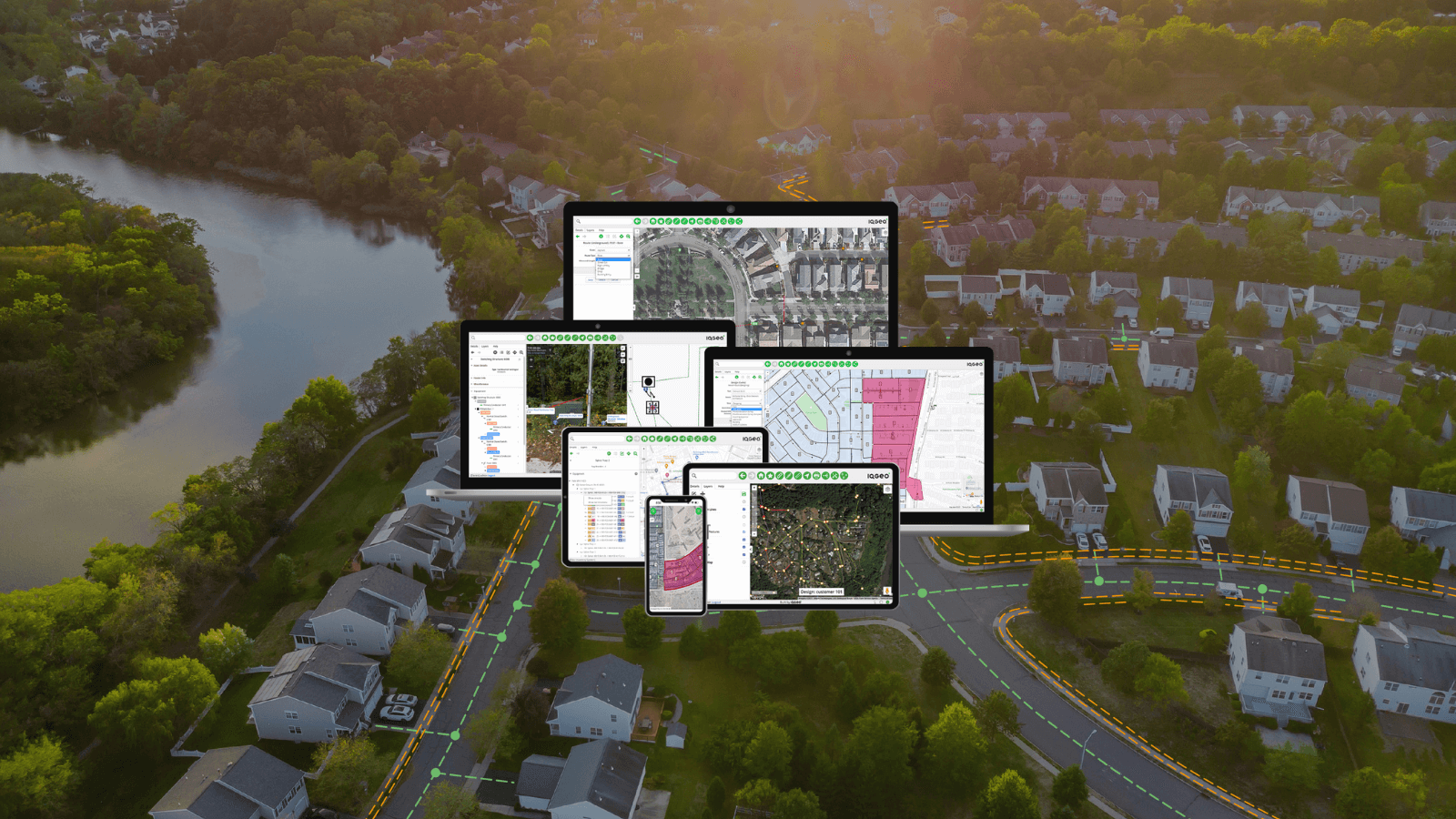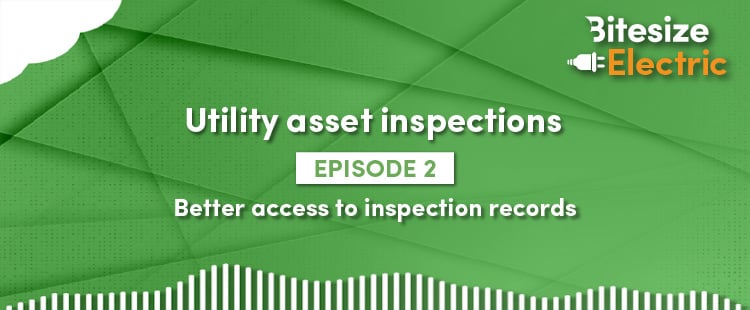The construction phase of fiber deployment is where designs become reality, and where mistakes can cost time, money, and customer trust. Traditionally, quality checks and issue resolution often happen after crews leave the site, meaning rework, delays, and extra truck rolls. But AI, and in particular real-time visual AI, is changing that.
By turning photos, scans, and video into instant, actionable insights, operators can catch issues in real time and fix them before they become expensive problems. This Bitesize Fiber special explores how IQGeo is using AI in construction to transform planning, quality control, workflow management, and subcontractor performance.
1. What is computer vision and why is it a game-changer in telecom?
Computer vision uses AI to ‘see’ and interpret images, detecting and measuring conditions automatically. In fiber construction, that means using photos, videos, or 3D scans to instantly verify trench depth, cabinet placement, pole positions, or splicing quality.
Why this matters?
- Manual inspections are slow and prone to human error.
- Quality issues often go unnoticed until after crews leave the site.
- Consistent, objective validation ensures every build meets the same high standard.
IQGeo best practice
Integrate AI-powered visual checks into standard site workflows.
Provide field crews with mobile tools that deliver instant pass/fail feedback.
Use results to resolve issues in the field, avoiding repeat visits.
2. Catching issues before fiber construction starts
AI computer vision isn’t just for the fiber build phase. It can also improve planning. By analyzing imagery, drone scans, or GIS overlays, AI can flag potential issues like trench routes too close to utilities or hidden obstacles that might derail construction.
Why this matters?
- Avoids costly, last-minute reroutes during fiber construction.
- Reduces permitting delays caused by unexpected hazards.
- Improves safety by identifying risks before work begins.
IQGeo best practice
Combine AI analysis with existing GIS and planning data.
Run pre-construction validation on all routes to catch issues early.
Adjust designs proactively to keep projects on track.
3. Instant on-site feedback for ‘right first time’ fiber builds
Real-time visual AI can give crews immediate validation of trench depths, cabinet positions, or splice quality. Instead of sending photos for later review, AI checks are done on the spot, meaning issues are fixed before the crew packs up.
Why this matters?
- Reduces rework and eliminates second truck rolls.
- Improves confidence that every completed task meets specification.
- Cuts costs by resolving problems during the first visit.
IQGeo best practice
Deploy mobile AI tools that work in real-world field conditions.
Integrate results into a single, accessible platform for all teams.
Train field crews to use AI as part of their normal workflow, not as an extra step.
4. Real-time workflow updates when obstacles arise
Fiber construction rarely goes exactly to plan. Unexpected challenges (from rock beds to blocked access) can delay work if field crews must wait for back-office decisions. AI-powered ‘exception-triggered’ workflows can detect these situations and update tasks automatically.
Why this matters?
- Prevents work from stalling while waiting for approvals.
- Reduces downtime by instantly notifying the right teams.
- Keeps projects on schedule despite unforeseen issues.
IQGeo best practice
Link AI exception detection directly to planning and scheduling systems.
Automate task reassignment when workflows change.
Ensure real-time communication between field and office teams.
5. The balance between AI and human expertise
AI is not here to replace field crews. It’s here to enhance them. Automated visual checks can handle repetitive, high-precision measurements, while human expertise is still essential for complex decision-making and safety-critical judgments. The best results come from a balanced approach that fits seamlessly into the way crews already work.
Why this matters?
- AI delivers speed and precision but can’t replace field judgment in complex or unusual situations.
- Field crews bring critical context and experience that algorithms alone can’t replicate.
- Over-reliance on automation without human oversight risks missing unique, location-specific challenges.
IQGeo best practice
Let AI take care of repetitive checks while field crews focus on higher-value tasks.
Keep tools flexible so field teams can override or annotate AI outputs.
Design workflows that adapt to crews, not the other way around.
6. Managing subcontractor performance with real-time visual AI
For fiber operators, AI computer vision provides evidence-based proof of build quality; for subcontractors, it’s a fast track to getting paid. With real-time visual validation, both sides gain from accurate, objective quality checks.
Why this matters?
- Ensures subcontractors deliver ‘right first time’ builds.
- Reduces disputes over quality and completion.
- Speeds up payment cycles with verifiable proof of work.
IQGeo best practice
Make AI validation part of the standard sign-off process.
Share feedback and results with subcontractors immediately.
Build trust through transparency and clear, objective criteria.
The future of AI in fiber construction
Over the next few years, real-time visual AI will expand from real-time validation to predictive quality assurance, automated audits, and improved safety monitoring. For fiber operators, this means fewer delays, reduced rework, and greater consistency across builds. For field crews, it means fewer headaches, faster site closures, and more confidence in the work they deliver.
Operators that integrate AI into their construction workflows now will not only save time and money but also set a new standard for network quality and efficiency. In fiber construction, as in all parts of the telecom lifecycle, building it right the first time is the best investment you can make.
Watch the full episode of Bitesize Fiber: Real-time visual AI in construction to explore this topic in more detail.
Interested in seeing real-time visual AI for fiber construction in action? Connect with our team today to schedule a personalized demo and learn more about how IQGeo can support your next project.

Product Manager, IQGeo
Similar articles:


 Previous
Previous







